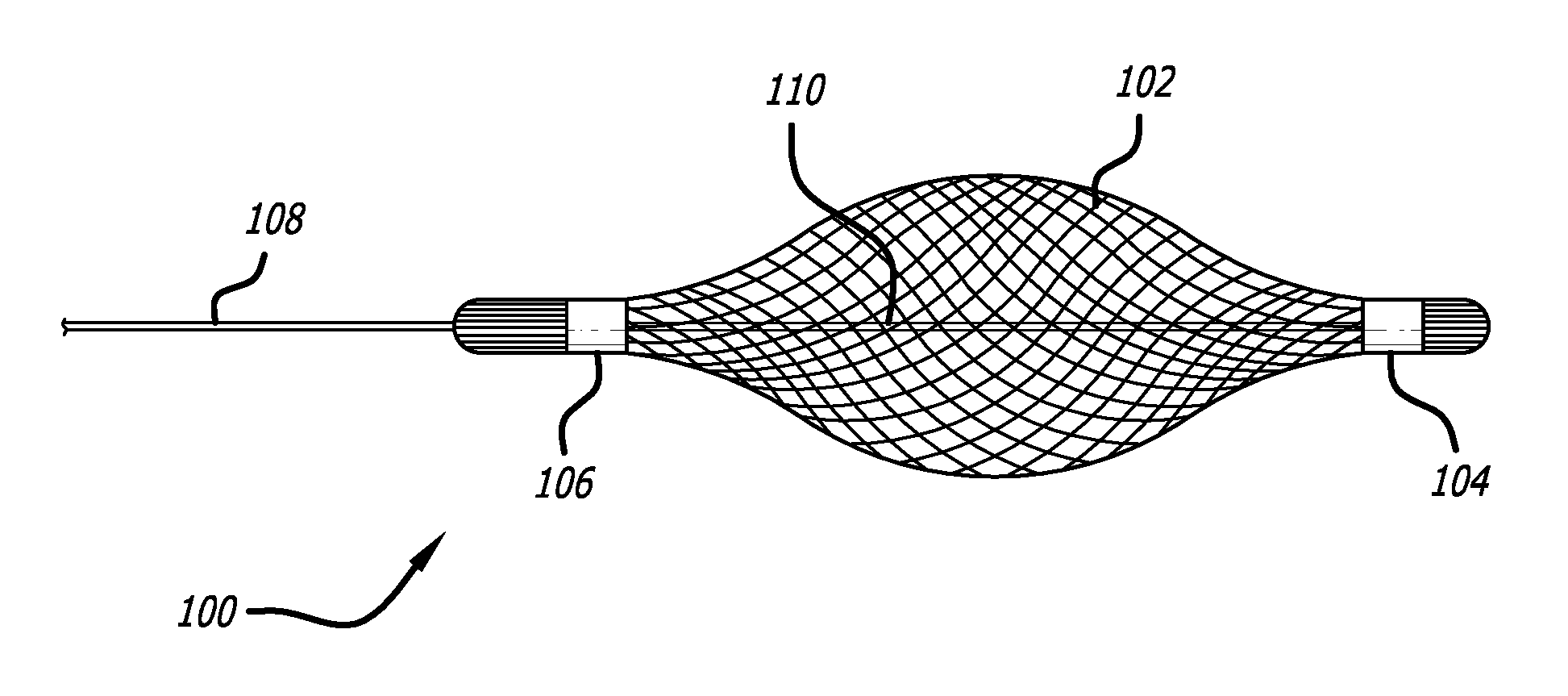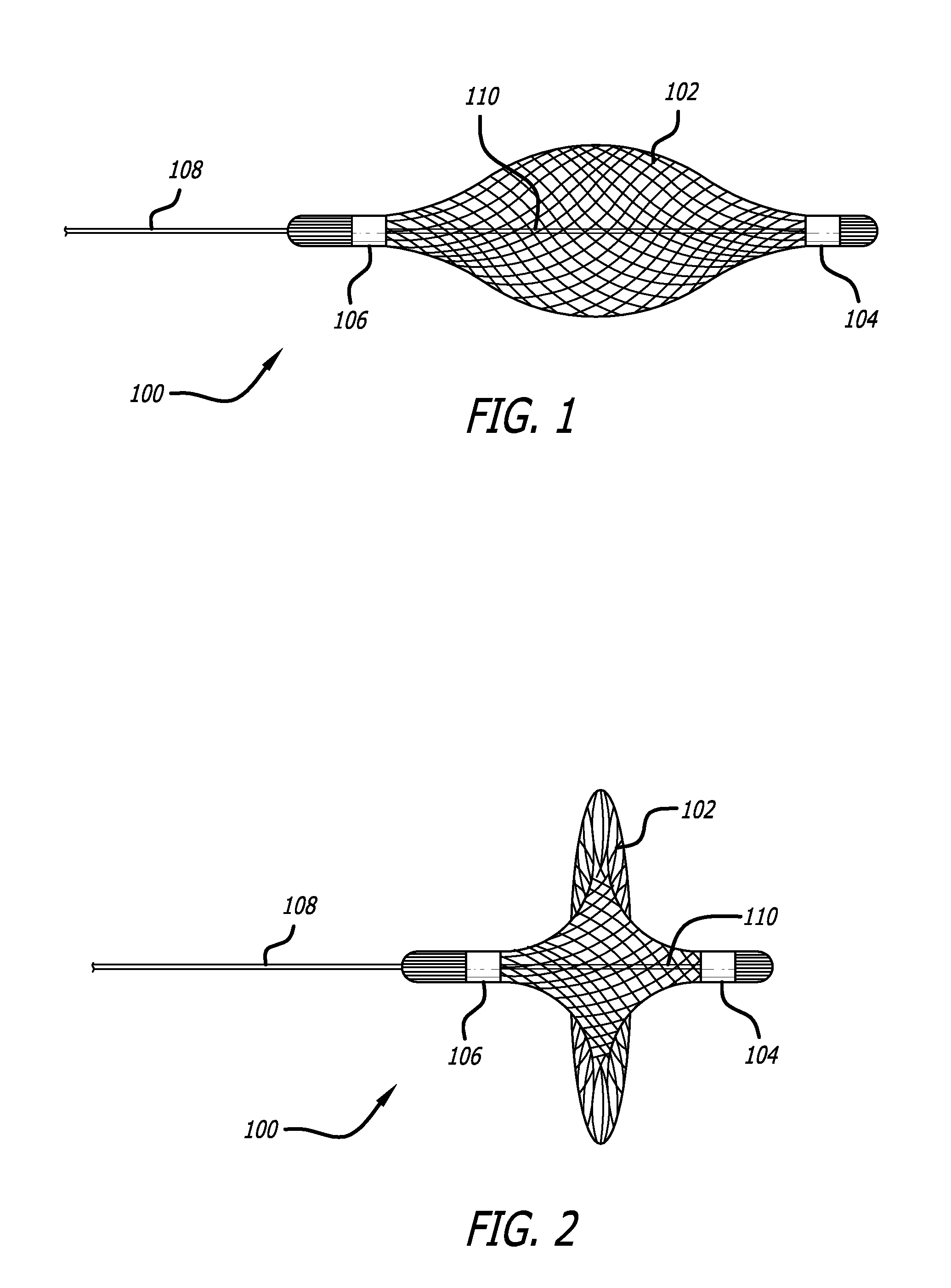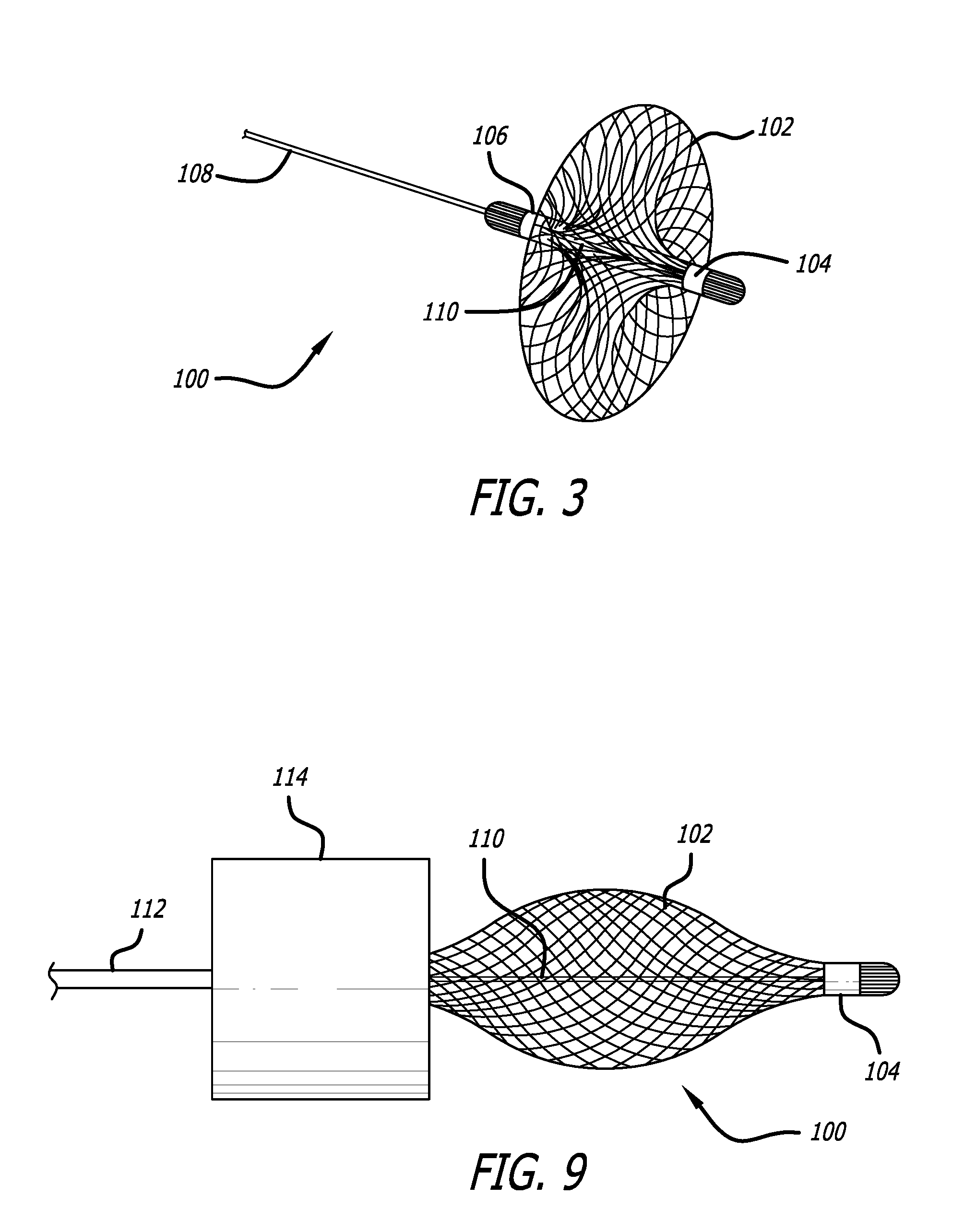Delivery Tool For Percutaneous Delivery Of A Prosthesis
a technology for prosthesis and percutaneous delivery, applied in the field of delivery tools for percutaneous delivery of prosthesis, can solve the problems of stenosis, narrowing of the passageway through the valve, heart failure and ultimately death, and large discomfort, and achieve the effect of minimal leakag
- Summary
- Abstract
- Description
- Claims
- Application Information
AI Technical Summary
Benefits of technology
Problems solved by technology
Method used
Image
Examples
Embodiment Construction
[0039]FIG. 1 illustrates an embodiment of an expandable delivery tool 100 according to the present invention. Generally, the expandable delivery tool 100 is removably positioned within the vessel of a patient to assist in the delivery and positioning of a prosthesis at a target area. In this respect, a user can more precisely deploy a prosthesis while minimizing unwanted deployment complications.
[0040]The expandable delivery tool 100 includes a deformable mesh region 102 that expands from a reduced diameter configuration seen in FIG. 1 to a flared expanded diameter configuration seen in FIGS. 2 and 3. The diameter of the mesh region 102 is adjusted by increasing or decreasing the distance between a proximal and distal end of the mesh region 102. More specifically, a distal anchor 104 secures the distal end of the mesh region 102 to a control wire 110 that extends through the mesh region 102 and proximally towards the user. An outer sheath 108 slides over the control wire 110 and is ...
PUM
 Login to View More
Login to View More Abstract
Description
Claims
Application Information
 Login to View More
Login to View More - R&D
- Intellectual Property
- Life Sciences
- Materials
- Tech Scout
- Unparalleled Data Quality
- Higher Quality Content
- 60% Fewer Hallucinations
Browse by: Latest US Patents, China's latest patents, Technical Efficacy Thesaurus, Application Domain, Technology Topic, Popular Technical Reports.
© 2025 PatSnap. All rights reserved.Legal|Privacy policy|Modern Slavery Act Transparency Statement|Sitemap|About US| Contact US: help@patsnap.com



